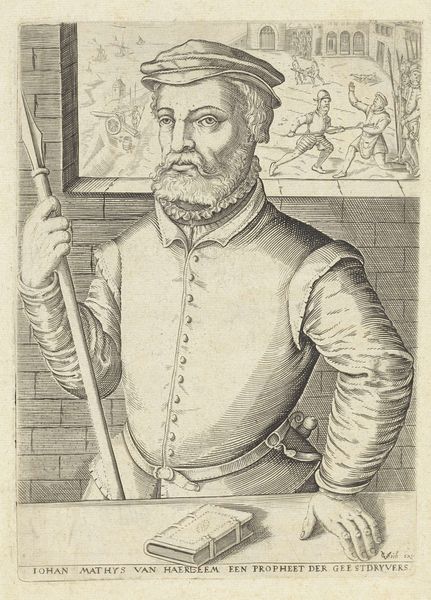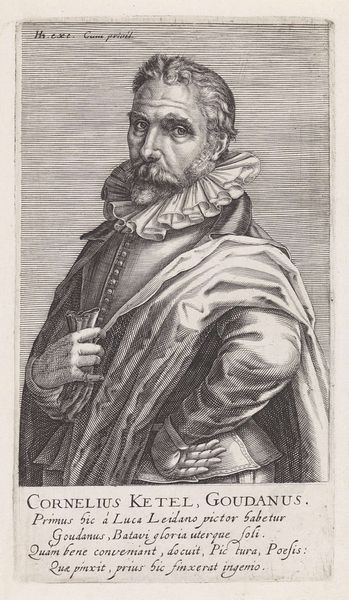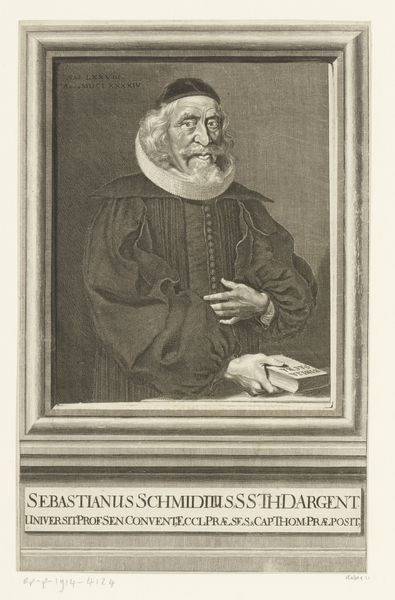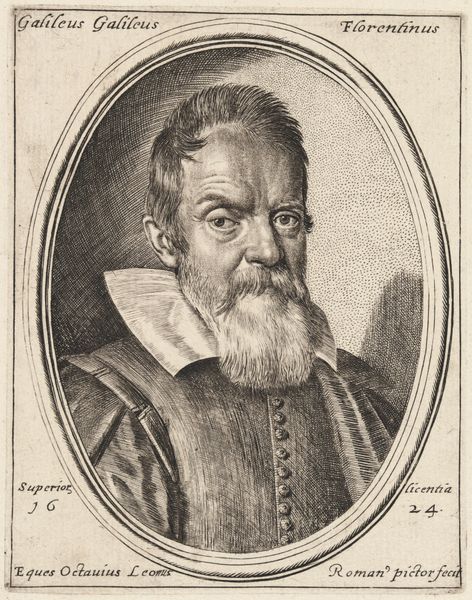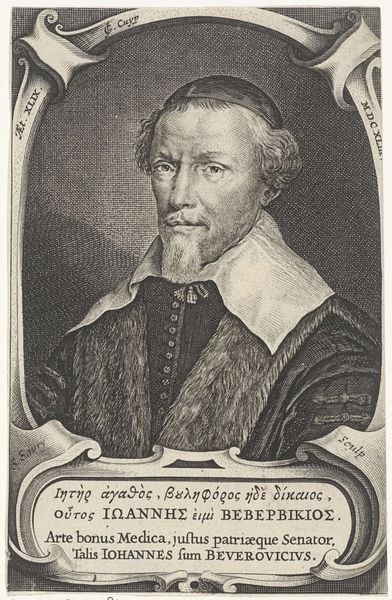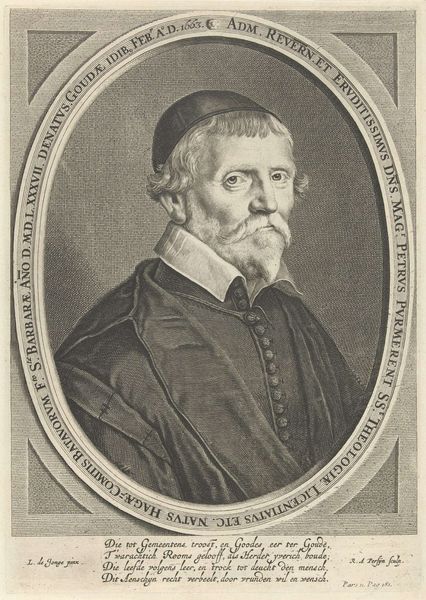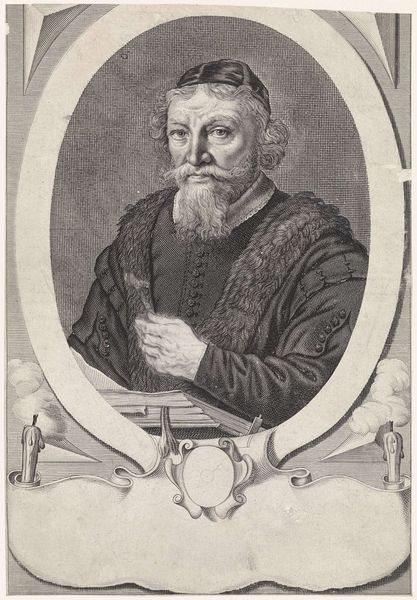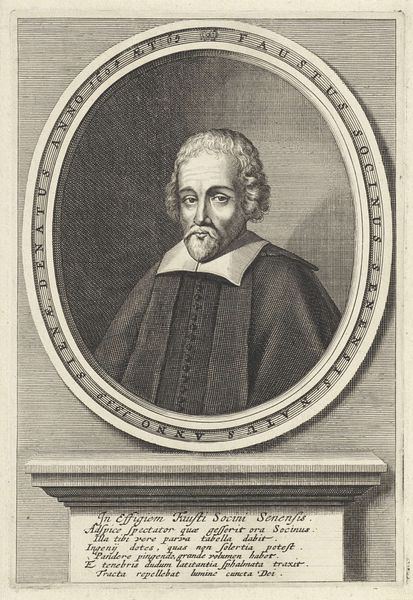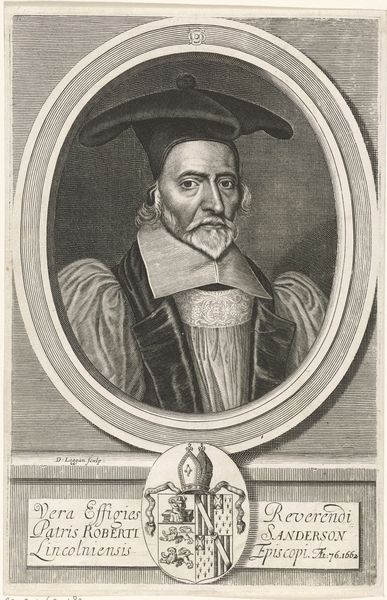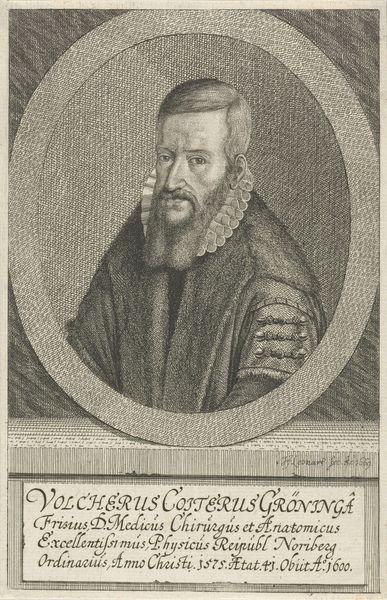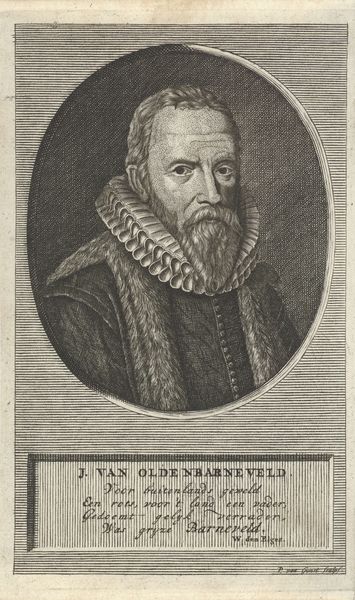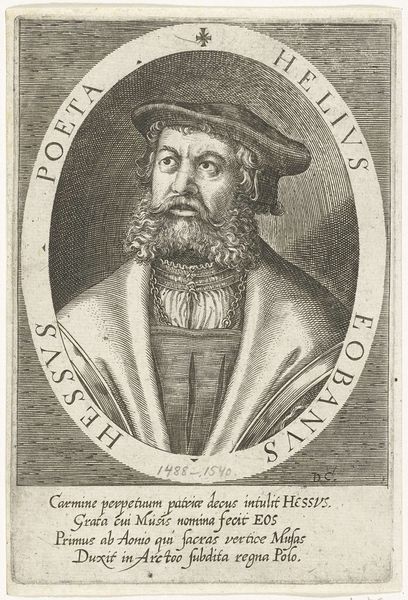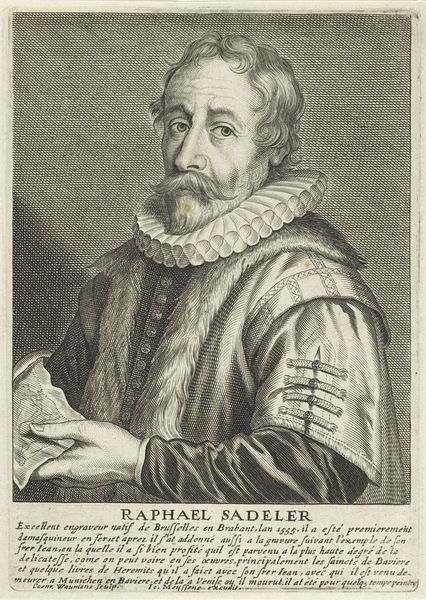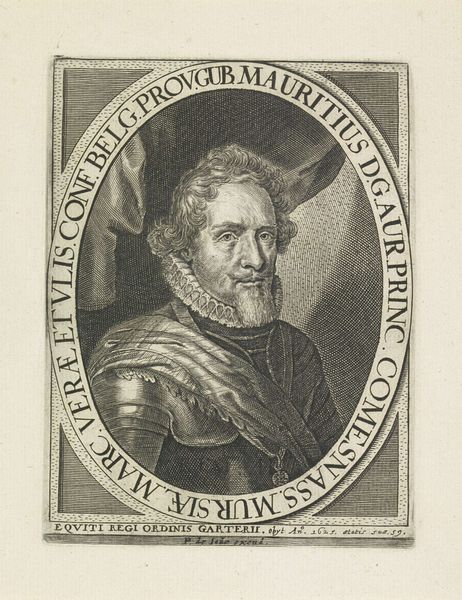
engraving
#
portrait
#
baroque
#
old engraving style
#
portrait reference
#
19th century
#
portrait drawing
#
engraving
Dimensions: height 290 mm, width 187 mm
Copyright: Rijks Museum: Open Domain
Curator: This is a portrait engraving of Hendrik Brouwer, an important figure in Dutch colonial history, made sometime between 1702 and 1749, credited to Isaac Ledeboer. Editor: Immediately, I see the power conveyed here: the sitter's poised hand, the distant gaze, the subtle glint of what appears to be a sword hilt. A cool assertion of dominance. Curator: Yes, the choice of engraving as a medium is significant. Engravings, produced through a laborious process of carving into a metal plate, were often used for mass reproduction and distribution. This allowed the image of Brouwer, the governor-general, to circulate widely, asserting Dutch power. Editor: Power and control, undoubtedly. But also consider the inherent tension. Brouwer served as governor in the Dutch East Indies. This image, carefully crafted and circulated, masks the violence of colonial rule. Curator: Absolutely. Think about the artisanal skill involved. The lines are so fine, so meticulously rendered, which speaks to the craftsmanship present. These are handmade, yet designed to project standardized authority figures. It brings into question the value we assign to unique, often "high," artworks, as opposed to works of reproducible nature. Editor: Precisely, and this form is no accident. In a period of increasing globalization and trade, images became tools. A portrait like this consolidates a particular narrative of leadership and control. We see Brouwer framed by what seems like the natural world as backdrop, suggesting Dutch mastery not just over people but also over distant landscapes. Curator: Moreover, engravings existed within a complex system of patronage, artistic labor and commerce. Who commissioned this engraving? Who printed and distributed it? By investigating the context of making we shed a brighter light onto not only Dutch colonial politics, but also the production of images in the 18th century. Editor: Right. This wasn't simply a benign commemorative exercise, it's a propaganda effort using images to maintain control, reflecting and reinforcing social hierarchies through material means. It forces us to critically assess legacies. Curator: I agree completely, thinking about the artistic craftsmanship also opens up discussion on the impact it may have on its reception across various social classes. Editor: It's a striking image, made even more complex when considering the layers of history, labour, and intent embedded in its very creation. Curator: Indeed, let's reconsider the role these images had in history; considering not only who is represented, but the labor used for its proliferation.
Comments
No comments
Be the first to comment and join the conversation on the ultimate creative platform.
